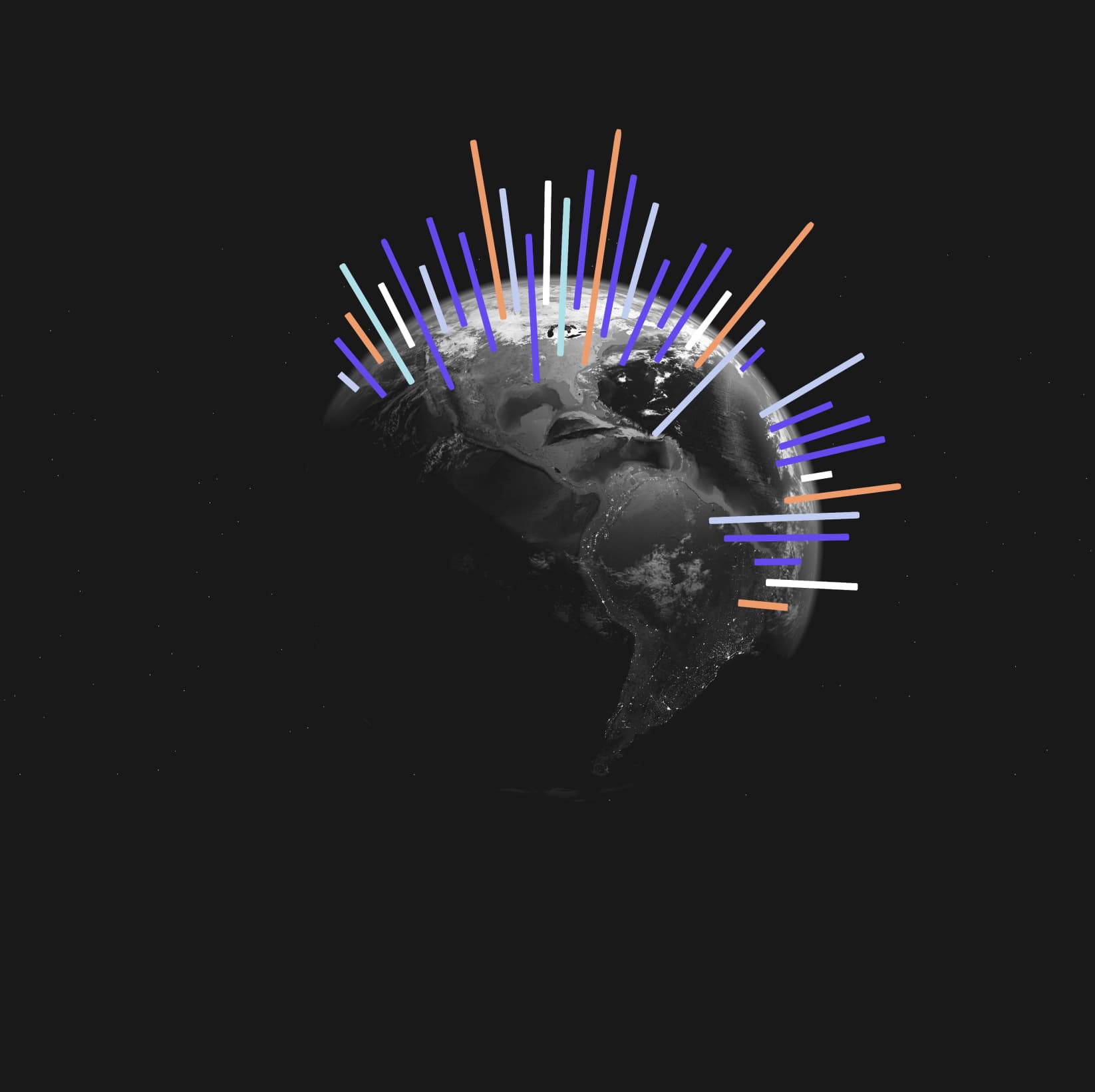In today’s business environment, every company operates within a dynamic landscape filled with diverse customer profiles, each with its own distinct needs and preferences. To flourish, you must uncover the underlying patterns and connections that drive consumer behaviour. This is where market segmentation in business intelligence becomes your key to success.
But how do you create a clear roadmap for your business? How do you ensure that you’re effectively reaching and engaging the right audience with your offerings?
The answer lies in harnessing the power of customer research to enhance your market segmentation strategies.
Personalisation Boosts Revenue: According to a study by Epsilon, 80% of consumers are more likely to make a purchase when brands offer personalised experiences. This highlights the significance of market segmentation and customer research in tailoring offerings to individual preferences.
In the fast-paced and competitive business world, understanding your customers and effectively segmenting your market is crucial. Market segmentation in business intelligence involves dividing your target audience into distinct groups based on shared characteristics, allowing you to tailor your offerings and strategies to their unique needs. However, achieving accurate and meaningful market segmentation requires a deeper understanding of your customers’ behaviours, preferences, and motivations.
In this article, we will explore how customer research serves as the compass that directs your market segmentation journey. By venturing into the realm of customer insights, you’ll discover how to navigate the intricacies of your market landscape and unlock hidden opportunities.
Together we will unravel the importance of market segmentation in business intelligence, exploring its role in shaping business strategies. We will dive into the significance of customer research, understanding how it illuminates the diverse needs and hidden desires within your customer base. Furthermore, we will introduce you to data-driven insights platforms such as Trendata, which act as your trusted allies in acquiring and leveraging customer research. With their advanced analytics capabilities, these platforms empower you to extract actionable insights and implement data-driven strategies.
Let’s go.
Market Research in Business Intelligence
Understanding your target market is crucial for success. This is where market research in business intelligence comes into play. Market research enables companies to gather valuable insights about their customers, competitors, and industry trends. It forms the foundation for effective decision-making and strategy development. In this section, we will explore the current practices of market research, traditional approaches to market segmentation, the limitations of these methods, and the need for a more customer-centric approach.
Overview of Current Market Research Practices
Market research encompasses a wide range of techniques and methodologies to gather information about the market. These practices typically involve collecting both primary and secondary data. Primary data is obtained directly from target customers through surveys, interviews, focus groups, and observations. Secondary data, on the other hand, includes existing information from various sources such as industry reports, government publications, and online databases.
Traditional Approaches to Market Segmentation
Traditionally, market segmentation has been carried out using demographic, geographic, psychographic, and behavioural factors. Demographic segmentation categorises customers based on age, gender, income, education, and other demographic variables. Geographic segmentation divides the market based on geographical boundaries such as countries, regions, or cities. Psychographic segmentation focuses on customers’ lifestyles, values, interests, and attitudes. Behavioural segmentation classifies customers based on their purchasing behaviour, brand loyalty, usage patterns, and benefits sought.
Limitations of Traditional Market Research Methods
While traditional market research methods have provided valuable insights over the years, they do have limitations. One major drawback is their reliance on static and generalisable segments. Customers today exhibit diverse and ever-changing preferences, making it challenging to capture their nuances using broad categorisations. Additionally, traditional approaches often overlook the emotional and psychological factors that drive customer behaviour. By relying solely on demographic or geographic variables, companies may miss out on crucial insights that can lead to more effective targeting and personalised experiences.
The Need for a More Customer-Centric Approach
To overcome the limitations of traditional market research, businesses must adopt a more customer-centric approach. Today’s consumers expect personalised experiences and offerings that resonate with their needs and preferences. This necessitates a deeper understanding of customers on a granular level. By embracing a customer-centric approach, companies can identify micro-segments within broader categories and uncover unique insights that drive customer engagement and loyalty.
Behavioural Segmentation on the Rise: Behavioural segmentation is gaining popularity among businesses due to its effectiveness in understanding customer actions and motivations. In fact, a report by Winterberry Group found that 78% of marketers are prioritising behavioural segmentation as part of their marketing strategies.
A more customer-centric approach involves integrating customer research into market segmentation efforts. It goes beyond demographics and taps into psychographic, behavioural, and attitudinal data to paint a holistic picture of customers. By leveraging advanced analytics and machine learning techniques, companies can identify patterns, correlations, and predictive indicators that traditional methods may miss. This data-driven approach enables businesses to develop highly targeted marketing campaigns, tailored products, and personalised customer experiences.

The Value of Customer Research in Market Segmentation
Market segmentation is a powerful tool that allows businesses to divide their target market into distinct groups based on shared characteristics. However, relying solely on traditional methods for market segmentation can be limiting. This is where customer research plays a pivotal role. By delving deeper into customer behaviour, needs, and preferences, businesses can enhance their market segmentation efforts and unlock valuable insights. In this section, we will explore the value of customer research in market segmentation.
Understanding Customer Behavior and Preferences
Customer research provides businesses with a deeper understanding of customer behaviour and preferences. Through market intelligence, companies can uncover valuable insights about what drives their customers’ decision-making processes. Understanding factors such as motivations, purchasing habits, and brand perceptions enables businesses to segment their market based on meaningful criteria. For example, a clothing retailer may discover that a particular segment of its customer base prioritises sustainable fashion choices. Armed with this knowledge, they can tailor their marketing messages and product offerings to specifically target this environmentally conscious segment.
Identifying Customer Needs and Pain Points
Customer research helps businesses identify customer needs and pain points. By actively listening to customers through feedback channels and conducting in-depth interviews, companies can uncover the challenges and frustrations that customers face. This information can then be used to refine market segments based on specific pain points. For instance, a software company might find that a segment of its customers struggles with a complex onboarding process. By identifying this pain point, the company can develop targeted solutions and provide better support to enhance the customer experience.
Customer Research Drives Innovation: Companies that prioritise customer research and listen to customer feedback are more likely to innovate successfully. Research conducted by PwC shows that customer-centric companies are 60% more likely to have successfully introduced new products or services to the market.
Uncovering Hidden Customer Segments
Customer research has the potential to uncover hidden customer segments that may not be apparent through traditional market segmentation approaches. Through qualitative and quantitative research methods, businesses can identify unique characteristics, behaviours, or preferences that set certain customers apart. These hidden segments might represent untapped market opportunities or niche markets that can be strategically targeted. For example, an online grocery store might discover a segment of health-conscious customers who prefer organic and locally sourced products. This segment may have been overlooked using traditional segmentation criteria, but with customer research, the business can create tailored marketing strategies to capture this specific market segment.
Enhancing Product/Service Customisation and Targeting
Customer research enables businesses to enhance product or service customisation and targeting. By gaining insights into individual customer preferences, businesses can personalise their offerings to better align with customer expectations. Through surveys or data analysis, companies can identify patterns and trends that indicate preferences for certain features or customisation options. This allows businesses to develop targeted products or services that cater to the specific needs of different customer segments. For instance, a technology company might find that a segment of its customers values seamless integration with other software applications. Armed with this knowledge, they can prioritise developing integrations and customisation options to better serve this segment.
Improving Customer Satisfaction and Loyalty
Customer research plays a vital role in improving customer satisfaction and loyalty. By understanding customer needs, pain points, and preferences, businesses can proactively address issues and deliver exceptional experiences. This leads to higher levels of customer satisfaction and increased loyalty. For example, a hotel chain might conduct customer surveys to understand the factors that contribute to guest satisfaction. By acting on the feedback received, they can make necessary improvements to amenities, service quality, or room features, ultimately fostering stronger customer loyalty and positive word-of-mouth.
The Power of Emotional Insights: Traditional market segmentation often overlooks the emotional aspects of customer behaviour. However, a study by Forrester Research found that emotionally engaged customers are more valuable, spending 52% more on average compared to customers who are not emotionally engaged. Incorporating emotional insights through customer research can lead to more effective segmentation and tailored marketing strategies.

Leveraging Data-Driven Insights Platforms
In today’s data-driven world, businesses have access to vast amounts of customer data. However, the challenge lies in extracting valuable insights from this data to enhance market segmentation in business intelligence. This is where data-driven insights platforms like Trendata come into play. In this section, we will explore the importance of data-driven insights platforms, the benefits they offer for customer research, and how they enable businesses to implement data-driven strategies for market segmentation.
Introduction to Data-Driven Insights Platforms
Data-driven insights platforms are powerful tools that allow businesses to collect, analyse, and visualise large volumes of customer data. These platforms provide a centralised hub for managing customer information, making it easier to extract actionable insights and make informed decisions. By integrating data these platforms enable businesses to gain a comprehensive view of their customers and market dynamics.
RELATED: Crush Your Marketing Strategy with a UK Consumer Market Insights Platform
Benefits of Using Platforms like Trendata for Customer Research
Advanced Analytics Capabilities: Data-driven insights platforms provide robust analytics capabilities, including machine learning and predictive modelling. These advanced techniques help businesses uncover patterns, trends, and correlations within their customer data, enabling them to make data-driven decisions and identify new market segments.
Monitoring and Reporting: With data-driven insights platforms, businesses can monitor customer behaviour and market trends accurately. This monitoring allows for agile decision-making and adapting market segmentation strategies as customer preferences and market dynamics evolve.
Automation and Efficiency: Data-driven insights platforms automate data collection, cleaning, and analysis processes, saving time and improving efficiency. This allows businesses to focus on extracting insights and implementing strategies rather than getting lost in data management.
Data Aggregation and Management: Trendata offers seamless aggregation of data from more than 5 billion searches daily, enabling a more holistic understanding of customers and facilitating more accurate market segmentation.
RELATED: The Ultimate Guide to Choosing the Right Market Insights Suite for Your Business
Gathering and Analysing Customer Data
Data-driven insights platforms facilitate the gathering and analysis of customer data, allowing businesses to capture a comprehensive view of customer preferences, behaviours, and sentiments. These platforms provide the necessary tools to organise and structure data, making it easier to perform in-depth analysis and identify valuable insights.
Extracting Actionable Insights from Customer Research
Once customer data is gathered and analysed, the next step is to extract actionable insights. Data-driven insights platforms offer visualisation tools and dashboards that transform raw data into meaningful and easily understandable insights. These visualisations allow businesses to identify emerging trends, customer segments, and market opportunities. For example, businesses can use interactive charts and graphs to identify patterns in customer purchasing behaviour or preferences, enabling them to tailor their marketing strategies accordingly.
Data-Driven Insights Platforms Enhance Customer Research: Data-driven insights platforms like Trendata offer businesses advanced analytics capabilities and a centralised hub for customer data management. These platforms leverage machine learning and AI algorithms to extract actionable insights from vast amounts of customer information, enabling businesses to make data-driven decisions and enhance their market segmentation efforts
Implementing Data-Driven Strategies for Market Segmentation
Data-driven insights platforms empower businesses to implement data-driven strategies for market segmentation. By combining customer data with advanced analytics, businesses can create more refined and accurate market segments. These segments can be based on demographic, psychographic, behavioural, or other relevant criteria. Leveraging the insights gained from the platform, businesses can customise their marketing messages, product offerings, and customer experiences to resonate with each segment. This personalised approach enhances customer engagement, and satisfaction, and ultimately drives business growth.
Final Thoughts
In the ever-evolving landscape of business intelligence, traditional methods of gathering customer insights, though valuable, no longer suffice in the face of increasingly complex consumer data. The shift towards data-driven intelligence demands a more sophisticated approach to understanding and anticipating customer needs and preferences.
Leveraging search data becomes pivotal in this new era, as it provides a real-time snapshot of the universe of desires and demands. From an hour to a year, search data captures the pulse of what consumers are looking for, enabling businesses to stay responsive to evolving trends and preferences.
Trendata, aggregates and analyses over 5 billion daily searches that empowers brands to unlock actionable insights and make the data-driven decisions that are needed to thrive in today’s fast-paced market.
So, embrace the power of market intelligence, and embark on a journey of customer-centric growth, fueled by the unparalleled capabilities of Trendata.







